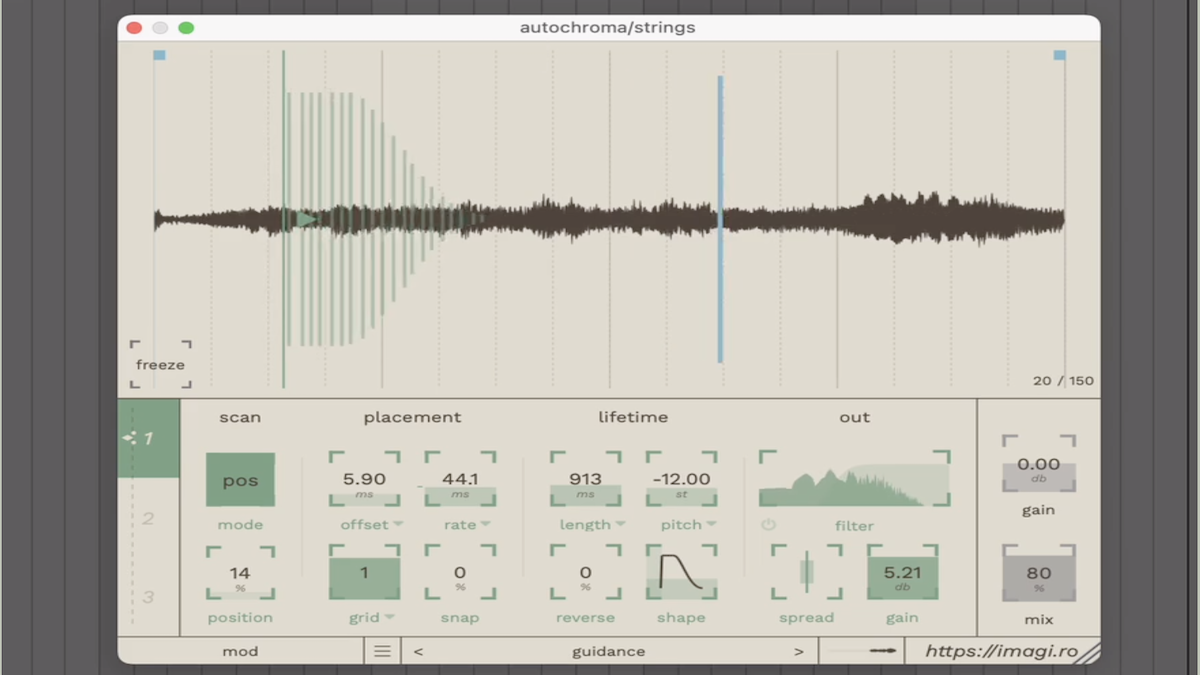Thanks to Autochroma, granular synthesis can now be 'fun'. Yes, really…
Autochroma will make you smash those grains and laugh while you're doing it, apparently

Granular synthesis is great, don't get us wrong. Anything that involves smashing something up and then making something new out of it is fantastic.
That said, we wouldn't put granular synthesis up there with, say, Lego as something that brings out the inner child of joy from within us. But Autochroma from Imagiro aims to change that…
Imagiro knows that granular synths can be overwhelming but claims Autochroma is like 'having a day off', and the plugin does appear to be an inviting and quite inspiring plugin.
You essentially get a buffer of sound coming into the plugin, shown over the top half of the UI, and three different ways to apply your granular processing. You can use a Locked Mode where the processing follows the play head, a Velocity mode where the processing applies to the length of the audio at defined speeds, and finally a Position Mode where it just processes certain parts of the audio.
All easy so far, but there are more detailed controls should you need them. You can change the grain offset and rate to change the level of granulising, and a set of 'Lifetime' parameters defines how the effect takes place over time.
And really, this is as deep as you need to go, because the best bit is how it sounds. Here's a demo.
It's fair to say, then, that Autochroma is easy to use and capable of a wide range of effects. You might think 'buzzy' and 'spacey' when it comes to granular but here you can quite easily wrestle filter, thickening and reverb effects out of the plugin.
Want all the hottest music and gear news, reviews, deals, features and more, direct to your inbox? Sign up here.
And the best bit is the price. Just $40 buys you Autochroma, so if the plugin doesn't make you smile, that price should.
More info from the Imagiro website.


Andy has been writing about music production and technology for 30 years having started out on Music Technology magazine back in 1992. He has edited the magazines Future Music, Keyboard Review, MusicTech and Computer Music, which he helped launch back in 1998. He owns way too many synthesizers.
